131st Armoured Division Centauro
The 131st Armoured Division Centauro (in Italian: 131ª Divisione Corazzata "Centauro") was an armoured division of the Italian Army during World War II. It was formed in February 1939, by upgrading the 1st Armoured Brigade (1ª Brigata Corazzata). It took part in operations in Albania, Greece and Yugoslavia before returning to Italy. Sent to North Africa in August 1942, it surrendered in Tunisia on 13 May 1943.[1]
| 131st Armoured Division Centauro | |
|---|---|
 131a Armoured Division Centauro Insignia | |
| Active | 1939–1943 1 November 1952 - 31 October 1986 |
| Country | Italy |
| Branch | Italian Armoured Corps |
| Type | Armoured |
| Size | Division |
| Nickname(s) | Centauro |
| Engagements | Italian invasion of Albania World War II Greco-Italian War Invasion of Yugoslavia Battle of El Agheila Battle of the Kasserine Pass |
History
The 1st Armoured Brigade was formed in April 1937, and, along with the 132nd Armoured Division Ariete, formed the Italian Armoured Corps. The two divisions took part in the first corps-level exercises in the Po Valley in the late 1930s. In February 1939, Centauro was re-designated a division.[2] It was initially and briefly attached to the reserve Army of the Po.
World War II
Balkans
When Italy invaded Albania in April 1939, the Centauro was equipped with L3/33 and L3/35 tankettes. The division also participated in the Greco-Italian War in 1940, just before it received its first M13/40 tanks in December 1940, and deployed with them at Këlcyrë in January 1941, losing many of them to the Greek artillery fire.[2] In April, the Centauro was deployed into Yugoslavia, together with the 4th Division "Littorio", where they performed well despite their outdated equipment. In June 1941 they were recalled to Italy to be re-equipped.[2]
North Africa
With the experience obtained from fighting in the Western Desert Italian Armoured Divisions were now re-organized into a three tank, three infantry battalion structure, combined with a large artillery regiment which included two small battalions of self-propelled guns and one anti-aircraft battalion and organic reconnaissance and engineer battalions.[2]
In August 1942, the 131st were ordered to prepare to move to Libya.[2]
The Centauro missed both the First and Second Battles of El Alamein, and arrived during the retreat from Egypt back into Libya in late 1942. On 13 December, during the Battle of El Agheila, the Centauro - along with a strong formation from the 132nd Armoured Division Ariete- forced the British 7th Armoured Division to retreat. Rommel gave significant praise of Italian conduct during this action.[3]
They were involved in several actions in Tunisia and, according to US historian Brian John Murphy, overran a part of the US forces defending Highway 13 during the Battle of the Kasserine Pass: "Axis forces also made a breakthrough on Highway 13, where the Italians of the Centauro Division spearheaded the attack. In the early morning hours, the Italians pressed their offensive, broke through the remains of the American line, and continued up Highway 13."[4] The Centauro remained in Tunisia as part of the Italian 1st Army until the end of the campaign, surrendering in May 1943.[2]
Order of Battle
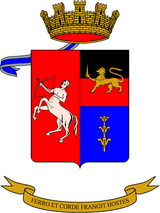
- 13th Armoured Battalion
- 14th Armoured Battalion
- 15th. Armoured Battalion

- 14th Bersaglieri Motorized Battalion
- 22nd Bersaglieri Motorized Battalion
- 24th Bersaglieri Motorized Battalion

- 22nd Motorized Infantry Support Battalion
- 31st Motorized Engineer Battalion
- Motorized Anti-Tank Battalion
- Armoured Car Battalion
- 5th Bersaglieri Motorcycle Company[1]
Post War
Reconstitution
The division was raised again after World War II on 1 April 1951. At first named Centauro Armored Brigade the division reached its full complement of troops in fall of 1952 and became the Centauro Armored Division on 1 November 1952. The division was based around Milan with the headquarters in the city of Verona. The division was initially part of the 4th Army Corps and consisted of the following units:
- Division Headquarters

- XVIII Bersaglieri Battalion with M3 Half-tracks
- XX Bersaglieri Battalion with M3 Half-tracks
- XXV Bersaglieri Battalion with M3 Half-tracks
- Bersaglieri Anti-tank Company with M40 recoilless rifles

- I Tank Battalion with M26 Pershing
- II Tank Battalion with M26 Pershing
- III Tank Battalion with M26 Pershing

- I Self-propelled Howitzer Group with M7 Priest
- II Self-propelled Howitzer Group with M7 Priest
- III Self-propelled Howitzer Group with M7 Priest
- IV Self-propelled Howitzer Group with M7 Priest
- V Light Air-defense Group with M1 40mm Automatic Guns
- VI Light Air-defense Group with M1 40mm Automatic Guns
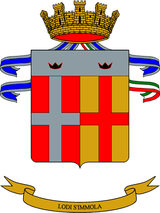
- CXXXI Engineer Battalion
- 131st Signal Company
In fall of 1955 the division moved its headquarters to Novara and joined 3rd Army Corps. The units of the Centauro moved to Milan and Bellinzago Novarese.
Cold War
In 1963 all Italian divisions adapted their organization to NATO standards and thus added a brigade level to the divisions structure.
- I Mechanized Brigade Centauro, in Milan

- VI Bersaglieri Battalion, with M113 armored personnel carriers
- X Bersaglieri Battalion, with M113 armored personnel carriers
- IV Tank Battalion with, M47 Patton main battle tanks
- Bersaglieri Anti-tank Company, with M40 recoilless rifles
- I/131st Armored Artillery Regiment, with M7 Priest 105mm self propelled howitzers
- I Service Battalion
- 1st Engineer Company
- 1st Signal Company
- II Armored Brigade Centauro, in Novara
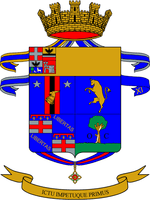
- VII Tank Battalion, with M47 Patton main battle tanks
- CI Tank Battalion, with M47 Patton main battle tanks
- I Bersaglieri Battalion, with M113 armored personnel carriers
- II/131st Armored Artillery Regiment, with M7 Priest 105mm self propelled howitzers
- II Service Battalion
- 2nd Engineer Company
- 2nd Signal Company
- III Armored Brigade Centauro, in Novara

- I Tank Battalion, with M47 Patton main battle tanks
- IX Tank Battalion, with M47 Patton main battle tanks
- XVIII Bersaglieri Battalion, with M113 armored personnel carriers
- III/131st Armored Artillery Regiment, with M7 Priest 105mm self propelled howitzers
- III Service Battalion
- 3rd Engineer Company
- 3rd Signal Company
- Centauro Artillery Brigade, in Vercelli)

- IV Heavy Self-propelled Field Artillery Group, with M44 howitzers
- V Heavy Self-propelled Artillery Group, with M55 203mm self propelled howitzers
- VI Light Air-defense Group with L60 40mm Automatic Guns

- CXXXI Engineer Battalion
- CXXXI Signal Battalion
- Centauro Light Airplane Section with L-21B
- Centauro Helicopter Section with AB 47J helicopters
On 1 October 1968 the brigade headquarters were disbanded and the divisions returned to its former structure. The Centauro Armored Division was part of the 3rd Army Corps based in North-Western Italy. The 3rd Army Corps was tasked with defending Lombardy and Piedmont in case the 4th Alpine Army Corps and 5th Army Corps would have failed to stop attacking Warsaw Pact forces east of the Adige river.
Before the major reorganization of 1975 the division consisted of the following units:

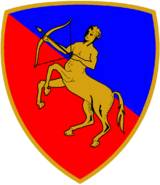

- Command and Services Company, in Civitavecchia (includes an anti-tank guided missile platoon)
- I Bersaglieri Battalion, in Civitavecchia (M113 armored personnel carriers)
- VI Tank Battalion, in Civitavecchia (M47 Patton tanks)
- XVIII Tank Battalion, in Civitavecchia (M47 Patton tanks)

- Command and Services Company, in Milan (includes an anti-tank guided missile platoon)
- IV Tank Battalion, in Solbiate Olona (M47 Patton tanks)
- XVIII Bersaglieri Battalion, in Milan (M113 armored personnel carriers)
- XXV Bersaglieri Battalion, in Solbiate Olona (M113 armored personnel carriers)

- Command and Services Company, in Bellinzago Novarese (includes an anti-tank guided missile platoon)
- I Tank Battalion, in Bellinzago Novarese (M47 Patton tanks)
- II Tank Battalion, in Bellinzago Novarese (M47 Patton tanks)
- XXVIII Bersaglieri Battalion, in Bellinzago Novarese (M113 armored personnel carriers)

- Command and Services Battery, in Vercelli
- I Self-propelled Field Artillery Group, in Vercelli (M109G 155mm self-propelled howitzers)
- II Self-propelled Field Artillery Group, in Civitavecchia (M109G 155mm self-propelled howitzers)
- III Self-propelled Field Artillery Group, in Novara (M109G 155mm self-propelled howitzers)
- IV Heavy Self-propelled Field Artillery Group, in Vercelli (M44 155mm self-propelled howitzers)
- V Heavy Self-propelled Artillery Group, in Vercelli (M55 203mm self-propelled howitzers)
- VI Light Anti-aircraft Artillery Group (Reserve), in Vercelli (Bofors 40mm anti-aircraft guns and 12.7mm anti-aircraft machine guns)[10]
- Artillery Specialists Battery, in Vercelli
- "Cavalleggeri di Lodi" Squadrons Group, in Lenta[11] (Fiat Campagnola reconnaissance vehicles and M47 Patton tanks)[12]
- Light Aviation Unit "Centauro", at Vercelli Air Base[13] (L-19E Bird Dog light aircraft and AB 206 reconnaissance helicopters)
- Engineer Battalion "Centauro", in Bellinzago Novarese
- Signal Battalion "Centauro", in Novara
- Services Grouping "Centauro", in Novara
- Command and Services Company, in Novara
- Supply, Repairs, Recovery Unit "Centauro", in Bellinzago Novarese[14]
- Transport Unit "Centauro", in Novara
- I Services Battalion "Centauro" (Reserve),[14] in Milan
- II Services Battalion "Centauro", in Civitavecchia
- III Services Battalion "Centauro", in Bellinzago Novarese
In 1975 the Italian Army undertook a major reorganization of it forces: the regimental level was abolished and battalions came under direct command of newly formed multi-arms brigades. The 3rd Bersaglieri Regiment became the 3rd Mechanized Brigade Goito and the 31st Tank Regiment became the 31st Armored Brigade Curtatone. The units of the 1st Armored Bersaglieri Regiment were transferred to the Granatieri di Sardegna Mechanized Brigade in Rome. Thus on 21 October 1975 the Centauro Armoured Division took command of the two newly created brigades and additional units to bring it up to full strength.
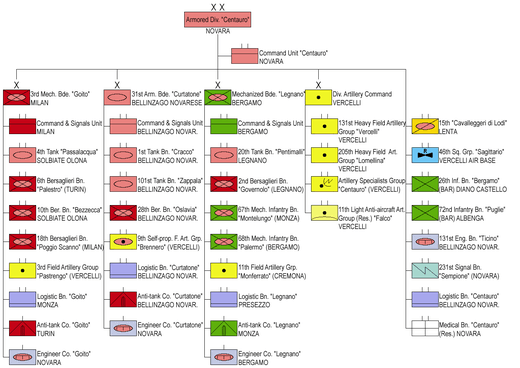

- Command Unit "Centauro", in Novara
- Divisional Artillery Command, in Vercelli


- Artillery Specialists Group "Centauro", in Vercelli
- 11th Light Anti-aircraft Artillery Group "Falco" (Reserve), in Vercelli






- 46th Reconnaissance Helicopters Squadrons Group "Sagittario", at Vercelli Air Base[18][19]
- Command and Services Squadron
- 461st Reconnaissance Helicopters Squadron (AB 206 reconnaissance helicopters)
- 462nd Reconnaissance Helicopters Squadron (AB 206 reconnaissance helicopters)
- Medical Battalion "Centauro" (Reserve), in Novara

- Command and Signal Unit "Goito", in Milan
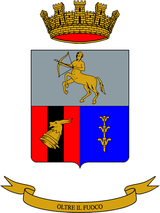
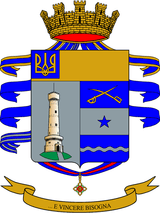
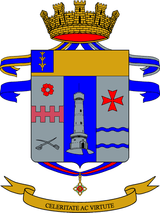



- Anti-tank Company "Goito", in Turin
- Engineer Company "Goito", in Novara

- Command and Signal Unit "Curtatone", in Bellinzago Novarese


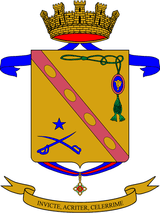
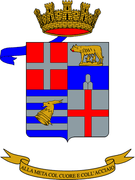
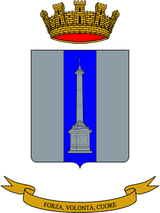
- Anti-tank Company "Curtatone", in Bellinzago Novarese
- Engineer Company "Curtatone", in Novara

- Command and Signal Unit "Legnano", in Bergamo
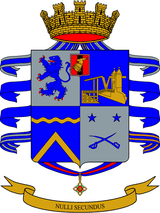


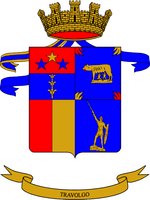


- Anti-tank Company "Legnano", in Monza
- Engineer Company "Legnano", Bergamo
On 31 October 1986 the Italian Army abolished the divisional level and brigades came under direct command of the Army Corps. As the Centauro Armored Division carried a historically significant name, the division ceased to exist on 31 October in Novara, but the next day in the same location the Centauro Armored Brigade was activated as part of 3rd Army Corps. The new brigade took command of the units of the Curtatone Armored Brigade, whose name was stricken from the roll of active units of the Italian Army.
References
- Wendal, Marcus. "Italian Army". Axis History. Retrieved 2009-05-04.
- Bennighof, Mike (2009). "Centauro at Gazala". Avalanche Press.
- The Rommel Papers, US version, p. 373
- "Murphy in America". WWII Magazine. Archived from the original on January 31, 2009. Retrieved 2009-05-04.
- "1° Reggimento". Associazione Nazionale Bersaglieri. Retrieved 10 November 2018.
- F. dell'Uomo, R. Puletti (1998). L'Esercito Italiano verso il 2000 - Vol. Primo - Tomo I. Rome: SME - Ufficio Storico. p. 398.
- F. dell'Uomo, R. Puletti (1998). L'Esercito Italiano verso il 2000 - Vol. Primo - Tomo I. Rome: SME - Ufficio Storico. p. 408.
- F. dell'Uomo, R. Puletti (1998). L'Esercito Italiano verso il 2000 - Vol. Primo - Tomo I. Rome: SME - Ufficio Storico. p. 540.
- F. dell'Uomo, R. Puletti (1998). L'Esercito Italiano verso il 2000 - Vol. Primo - Tomo II. Rome: SME - Ufficio Storico. p. 173.
- Stefani, Filippo (1985). La storia della dottrina e degli ordinamenti dell'Esercito Italiano. Rome: Ufficio Storico - Stato Maggiore Esercito. p. Volume III, Tomo 2, page 473-483.
- F. dell'Uomo, R. Puletti (1998). L'Esercito Italiano verso il 2000 - Vol. Primo - Tomo II. Rome: SME - Ufficio Storico. p. 66.
- Stefani, Filippo (1985). La storia della dottrina e degli ordinamenti dell'Esercito Italiano. Rome: Ufficio Storico - Stato Maggiore Esercito. p. Volume III, Tomo 2, page 437.
- Cerbo, Giovanni (1996). L'Aviazione dell'Esercito - Dalle origini ai giorni nostri. Rome: Rivista Militare. p. 76. Retrieved 28 November 2018.
- Franco dell'Uomo, Roberto di Rosa (2001). L'esercito Italiano verso il 2000. Rome: Ufficio Storico - Stato Maggiore Esercito. p. Volume II, Tomo 2, page 442.
- "131° Reggimento Artiglieria "Centauro" - disciolto". Esercito Italiano. Retrieved 16 November 2018.
- F. dell'Uomo, R. Puletti (1998). L'Esercito Italiano verso il 2000 - Vol. Primo - Tomo II. Rome: SME - Ufficio Storico. p. 173.
- F. dell'Uomo, R. Puletti (1998). L'Esercito Italiano verso il 2000 - Vol. Primo - Tomo II. Rome: SME - Ufficio Storico. p. 66.
- Cerbo, Giovanni (1996). L'Aviazione dell'Esercito - Dalle origini ai giorni nostri. Rome: Rivista Militare. p. 128. Retrieved 28 November 2018.
- Stefani, Filippo (1989). La storia della dottrina e degli ordinamenti dell'Esercito Italiano - Vol. III - Tomo 2nd. Rome: Ufficio Storico - Stato Maggiore dell'Esercito. p. 1187.
- F. dell'Uomo, R. Puletti (1998). L'Esercito Italiano verso il 2000 - Vol. Primo - Tomo I. Rome: SME - Ufficio Storico. p. 211.
- F. dell'Uomo, R. di Rosa (2001). L'Esercito Italiano verso il 2000 - Vol. Secondo - Tomo I. Rome: SME - Ufficio Storico. p. 36.
- "6° Reggimento Bersaglieri - La Storia". Esercito Italiano. Retrieved 16 November 2018.
- "7° Reggimento Bersaglieri - La Storia". Esercito Italiano. Retrieved 16 November 2018.
- "31° Reggimento Carri - La Storia". Esercito Italiano. Retrieved 16 November 2018.
- F. dell'Uomo, R. Puletti (1998). L'Esercito Italiano verso il 2000 - Vol. Primo - Tomo I. Rome: SME - Ufficio Storico. p. 96.
- F. dell'Uomo, R. di Rosa (2001). L'Esercito Italiano verso il 2000 - Vol. Secondo - Tomo I. Rome: SME - Ufficio Storico. p. 35.
- F. dell'Uomo, R. Puletti (1998). L'Esercito Italiano verso il 2000 - Vol. Primo - Tomo I. Rome: SME - Ufficio Storico. p. 74.
- "4° Reggimento Carri - La Storia". Esercito Italiano. Retrieved 17 November 2018.
Further reading
- George F. Nafziger - Italian Order of Battle: An organizational history of the Italian Army in World War II (3 vol)
- John Joseph Timothy Sweet - Iron Arm: The Mechanization of Mussolini's Army, 1920-1940